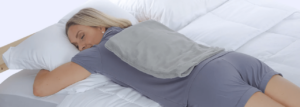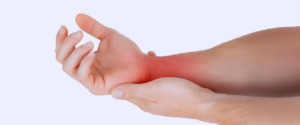Sciatica Pain Overview
Sciatica Pain Causes Symptoms Recovery Staying Active
What is sciatica? If you have a sharp pain in your lower back, hip, or back of the leg it might be from this condition. Sciatica pain and symptoms can vary widely and become frustrating, forcing you out of the activities you enjoy and make everyday routines difficult. The symptoms can worsen over time, so obtain a quick diagnosis and start treatment now to ease your recovery.
What is Sciatica?
Have you ever wondered if the pain, tingling, or numbness in your leg or glute is sciatica pain? Sciatica is the result of injury or compression to the sciatic nerve in the lower spine. It is not a medical condition in and of itself, but a symptom of a medical problem. It occurs in both men and women, most commonly between 30 and 50 years of age.
The pain typically only affects one side of the body. Luckily, sciatica pain can usually be treated with home therapies and conservative treatment. Surgery is rarely necessary.
About the Sciatic Nerve
The sciatic nerve is the largest nerve in the body. It runs from the lumbar spine down through the hips and buttocks, continuing down the back of each leg. The nerve controls the muscles of the back of the knee and lower leg. It also controls sensation in the back of the thigh, lower leg, and sole of the foot.
Sciatica Causes
Since sciatica pain is caused by compression or injury of the nerve roots from the lumbar and lumbosacral spine, sciatica causes are all related to changes in the lower spine. Some of the sciatica pain causes can be avoided with lifestyle changes, while others are unavoidable. Take a look to see if you are at risk of developing sciatica.
- Pregnancy
- Obesity
- Spondylolisthesis
- Spinal stenosis
- Diabetes
- Tight piriformis muscle
- Occupations that involve prolonged sitting
- Degenerative spinal disc disease
Most frequently, sciatica pain is caused by a bone spur or a herniated disk. However, it can be caused by something as simple as a mattress that is too hard or too soft or wearing high heels. Regardless of the cause, sciatica back pain should not be ignored. Always make an appointment with your doctor to pinpoint the cause of your pain.
Sciatica Symptoms
Sciatica symptoms typically follow the nerve from the lower back down through the buttocks into the leg. Sufferers have a wide description of sciatica pain symptoms. It can be a mild ache to a sharp, excruciating pain that makes it nearly impossible to walk. Frequently lying down or walking will relieve symptoms and sitting and standing will trigger them.
The classic signs of sciatica pain include:
- Numbness
- Weakness
- Tingling
- Shooting pain down the back, buttock, and leg
Triggers
Certain triggers can exacerbate symptoms. The most common triggers are quick movements, side bending, prolonged sitting, or moving from sitting to standing. If you suffer from spinal stenosis, bending backward or walking more than a short distance can cause pain. If you have a lumbar herniated disc, bending forward can trigger your symptoms.
Sciatica Diagnosis
Your doctor will take your health history and perform a physical exam. Typically, your doctor will obtain most of the information he or she needs from the description of your symptoms. If symptoms are severe, it may be determined that you need further testing to find what is causing your sciatica pain.
X-ray
A sciatica x-ray will look at the spinal bone structure. Your doctor will be able to see bone spurs or other malformations of your vertebrae.
MRI
A sciatica MRI will be able to provide images of your bones and soft tissues. Your doctor would be able to see a herniated disc with an MRI.
CT
A CT of your spine will show your spinal canal. Your doctor may have contrast dye injected to better visualize your spinal canal and the spinal nerves.
EMG
Electromyography (EMG) is an electrical nerve test that will determine if you have spinal nerve compression caused by a herniated disc or spinal stenosis.
Recovering from Sciatica
There is no one best sciatica cure. Often a combination of multiple treatments will yield the best results. Options might include home remedies for pain relief, physical therapy, chiropractic care, or a basic home exercise program. As always, talk to your doctor before you start any treatment or if you suffer from chronic sciatica or severe sciatica pain. Most people will have symptom relief within six to twelve weeks.
Staying Active with Sciatica Pain
You do not need to suffer from pain in your lower back, hips, and legs caused by the sciatic nerve. Finding the root cause of your pain, whether it is a tight muscle, herniated disc, or bone spur will get you started on the right path to effective treatment. While you are at home, we have listed many techniques and braces to help reduce the pain and get you back to all the activities you love!







